The National Agriculture and Food Research Organization (NARO) has revealed that it is possible to quickly identify three parasitic alien longhorn beetle species by analyzing the chemical substances contained in the "frass" excreted outside the tree by longhorn beetle larvae (a wood-boring pest) that infesting trees by making holes and weakening the tree. The regions/areas damaged by the alien longhorn beetle are expanding every year. Hence, with this research result, it is possible to minimize damage to infested trees and also it is possible to implement effective control measures tailored to each species at an early stage, which has been difficult until now because the insecticides applied differ depending on the species. In addition, since the damage to the surrounding area can be warned and detected from an early stage, it is also expected to prevent the expansion of alien longhorn beetle damaged regions.
Overview
In recent years, fruit trees and street trees have been infested with alien longhorn beetles that do not originally live in Japan, causing damage all over the country consecutively. For example, since the red-necked longhorn beetle was discovered in 2012, it has been reported in 13 prefectures as of June 2023, and the number of occurrence locations is increasing. This wood-boring pest not only causes fruit trees such as peaches, plums, and plums to wither within a few years, but it also causes severe damage to cherry blossom, which is a significant tourist resource. Hence it is crucial to suppress the spread of damage due to by the alien longhorn beetles.
In order to prevent the spread of damage caused by alien longhorn beetles, it is necessary not only to kill the adult beetles, but also to detect the tree which is infested with longhorn beetles while the larvae are still small, and to identify the beetle species. Usually in order to identify the species of larva, larvae are removed from the tree and their morphology is observed. They are then reared until they become adults, which are easier to classify. However, the problem has been that the removal procedure can severely damage infested trees and the larvae, making it impossible to identify them.
Therefore, NARO has developed a new method to confirm the species of longhorn beetles in trees that have been attacked by larvae. By this new method it is possible to quickly and reliably identify longhorn beetle species by analyzing the chemical components contained in the "frass" ejected from trees due to feeding damage by the larvae. It was revealed that the hydrocarbons on the body surface of larvae of the three species of alien longhorn beetle (red-necked longhorn beetle, Asian longhorn beetle, Apriona swainsoni) and white-spotted longhorn beetle, a closely related species native to Japan, are composed of components specific to each species, and that the same composition is contained in the frass excreted by each species. By this, regardless of the tree species, it is possible to identify the infested longhorn beetle species by analyzing the frass.
This result is expected to help prevent damage to fruit trees and protect street trees by identifying alien longhorn beetles that infest trees without damaging them, and by taking appropriate measures.
Budget: a grant (JPJ007097) from the Project of the Bio-oriented Technology Research Advancement Institution (Research program on development of innovative technology 04015C1)
Reference Information
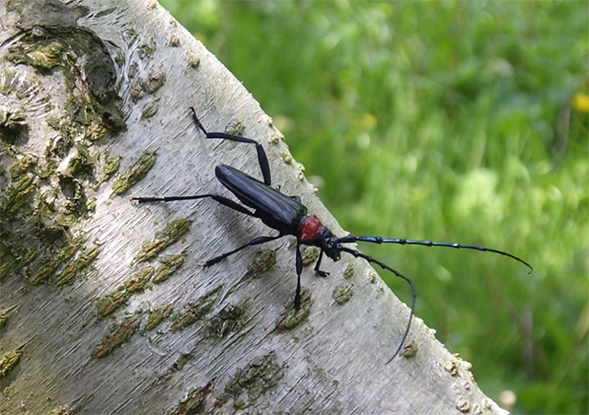
A. Aromia bungii
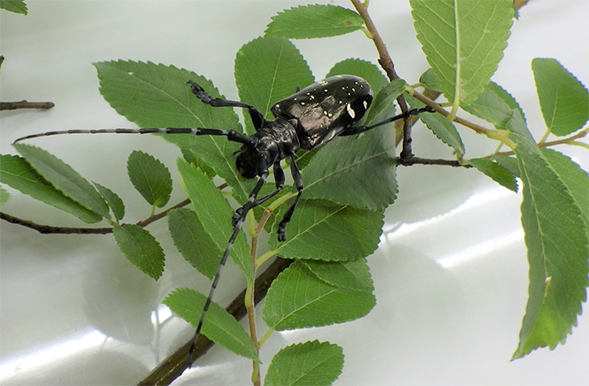
B. Anoplophora glabripennis
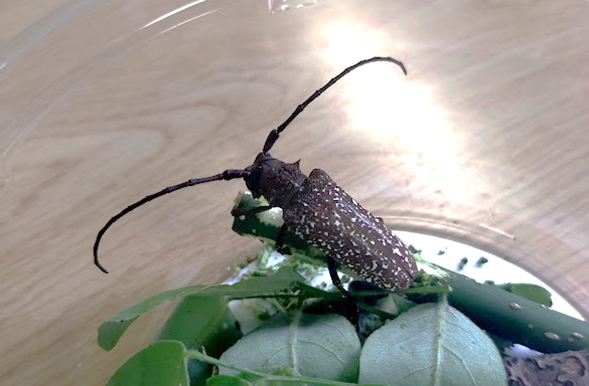
C. Apriona swainsoni
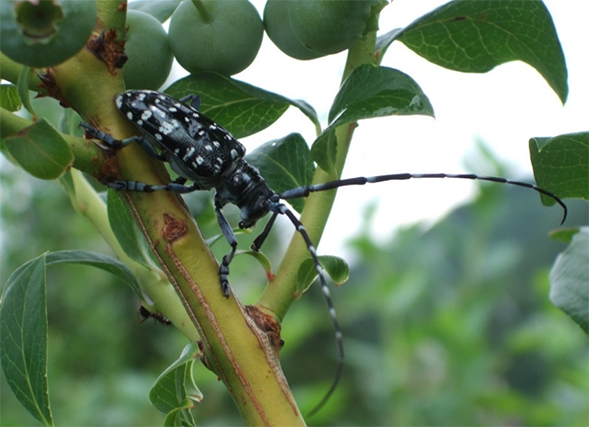
D. Anoplophora malasiaca (native in Japan)
Fig. 1 Photos of adult beetles used in our study
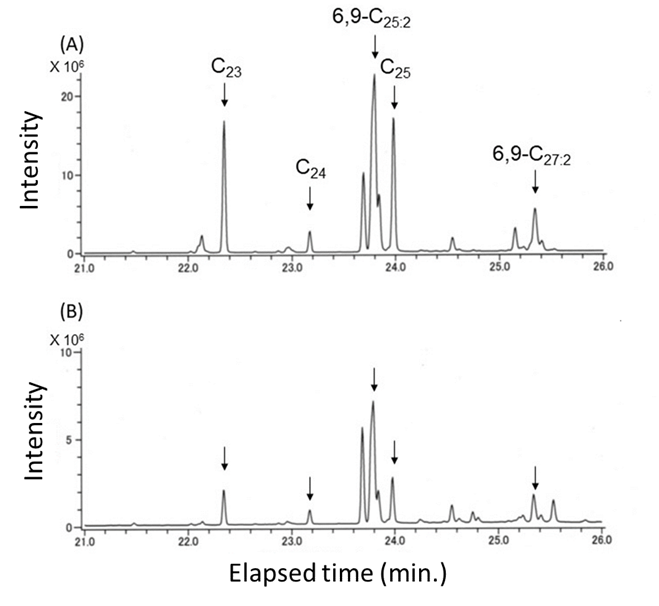
Fig. 2 Total ion chromatogram of GC/MS profiles of hydrocarbons of (A) A. bungii larvae and (B) their frass ejected from peach tree.
Arrowed peaks are commonly detected from both samples and could be used for non-destructive detection of their infection.
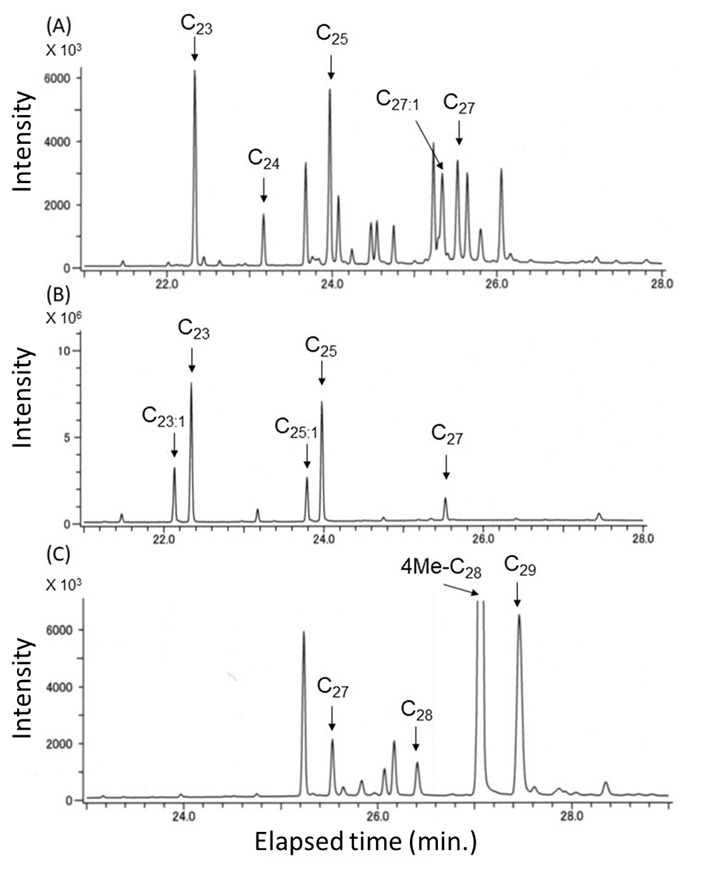
Fig. 3 Total ion chromatogram of GC/MS profiles of hydrocarbons of (A) A. glabripennis, (B) A. swainsoni, (C) A. malasiaca.
Arrowed peaks are detected from both larvae and their frass.
Publication
Nao FUJIWARA-TSUJII and Hiroe YASUI (2023) Detection of invasive and native beetle species within trees by chemical analysis of frass. Scientific Reports 13, 11837. https://doi.org/10.1038/s41598-023-38835-x




